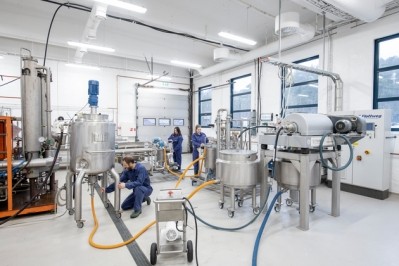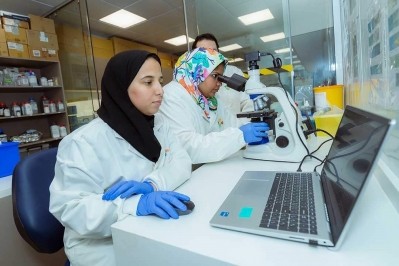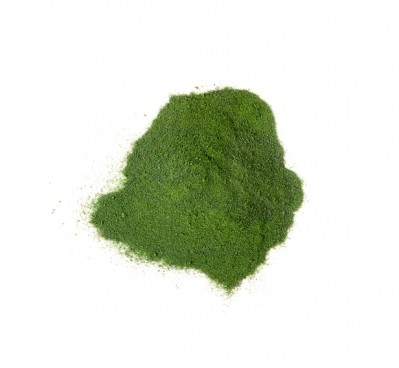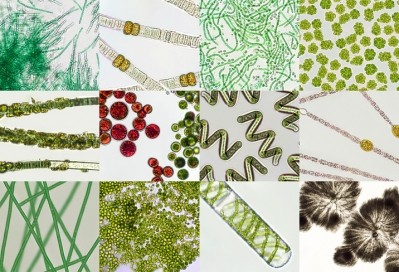After aquaculture success, Corbion looks to expand algae footprint in pet food

The producer flags AlgaPrime DHA as a more sustainable alternative to marine-based omega-3s, saying it can help to meet global demand for the fatty acids, while reducing pressure on global wild fish populations.
The algae-based omega-3 product is grown via a closed fermentation system, using sugarcane; it has already seen significant take-up in aquaculture markets, with Danish aqua feed producer, BioMar, contributing to that push.
Tailoring product to pet food market
With an increasing focus on premiumization, the pet food industry is a growing market for such inputs. Omega-3 sources are sought after to support pet’s health, as regular consumption of EPA and DHA is said to benefit pets’ cognitive function and cardiovascular, brain, eye, and joint health.
We spoke to Corbion Algae Ingredients president, Ruud Peerbooms, to hear more about the growth strategy for AlgaPrime DHA.
The algae-based omega-3 brand is already being used by pet food manufacturers in the EU and the US following the partnership Corbion established with IQI last year.
“In relation to sales, the North American pet food market is still larger, but the European market is somewhat more accessible. IQI has a great position in both.”
Corbion has been selling products - natural preservatives and emulsifiers – into the pet food market, but only as part of its lactic acid and emulsifier businesses; it did not have a dedicated focus, so it decided to engage with the specialized ingredient distributor to help it incorporate AlgaPrime DHA into pet food formulations on an international scale.
The company had to tailor the formulation and the delivery system of the omega-3 ingredient to address the demands of pet food makers, explained Peerbooms.
“When we started to work on AlgaPrime DHA, the formulation that we first brought to market was very much orientated towards aquaculture production; looking to broaden our reach, we evaluated antioxidants that would be suitable for use in pet food, and we also assessed the different physical formats that would fit. Today, we offer a highly concentrated DHA for inclusion in pet food that is stabilized by natural antioxidants. We do not add any other carriers or materials, so it is 100% biomass in a powder form.”
The producer, he continued, is really looking to step up its game now, in terms of supplying the major pet food suppliers in both the EU and North America, and the alliance with IQI should enable that adoption to grow at a rapid pace.
Projected growth for global pet nutriton market
Euromonitor predicts that the global pet nutrition market will grow at an average 4.3% CAGR through 2026.
According to the market research firm, the global pet food market is increasing steadily in value, reaching $123bn in sales in 2022, a 3.3% increase from 2021; it is expected to achieve $146bn in sales by 2026.
Process optimization
Corbion has been investing in its algae fermentation facility in Orindiuva, Brazil to ensure process optimization. The plant, acquired from TerraVia around five years ago, was initially only designed to handle one product.
“We have an ongoing debottlenecking program at the Orindiuva plant to gain more output and more flexibility, to be able to run multiple lines to cope with the growing demand from aqua and the pet food industry,” said Peerbooms.
Commercial breakthrough
The company finally achieved break-even EBITDA for its algae-based omega-3 production mid-way through last year.
“We bought the platform back in 2017 from TerraVia, after it had filed for bankruptcy. In 2020, we promised the outside world we would make our algae-based omega-3 production profitable within two years. We reduced costs and, on the basis of the aquaculture business, we achieved break-even in June 2022.”
At its Capital Markets Days in December last year, Corbion outlined how, with its omega-3 technology proven, the short-term ambition was a move into more profitable sectors such as human and pet nutrition. Beyond 2025, the goal would be to leverage its position in those segments to then introduce an extended range of algae derived ingredients. “Algae based omega-3 is only the starting point.”
Corbion’s R&D team in San Francisco is focused on algae strain development and fermentation excellence, screening thousands of algae strains to identify the most productive, efficient, palatable, and nutritious ones. Those researchers are now looking to both optimize algal yield strain and explore what additional products could be derived from algae: proteins, other lipids as well as antioxidants.
The financial goal for the end of 2025 is for the algae ingredients business line to hit €150m turnover and 25% or €25m EBIDTA under the company’s Advance Strategy 2025, said Peerbooms.
The ambition underlines the company’s confidence in the growth and profitability potential of this business line, he added.
Sustainability claims
Corbion has published data to back up the sustainability claims for AlgaPrime DHA.
In 2020, it completed a full LCA, which it said demonstrated that the omega-3 from AlgaPrime DHA has a lower carbon footprint than traditional fish oil sources. The ISO 14040/44-compliant LCA was peer-reviewed and accepted for scientific publication in Algal Research on September 15, 2021.
The company says it designed its production to deliver an advanced level of sustainability in the way it produces algae-based omega-3s, ensuring low carbon water and land-use impacts.
Its facility is strategically located among sugar cane fields in Brazil and next door to a sugar cane mill. Microalgae are grown in closed fermentation tanks where they transform the sugars into algae containing omega-3-rich biomass in a matter of days.
In addition, the sugar cane waste is used as a renewable source of energy that fully powers the sugar mill and the algae facility.












